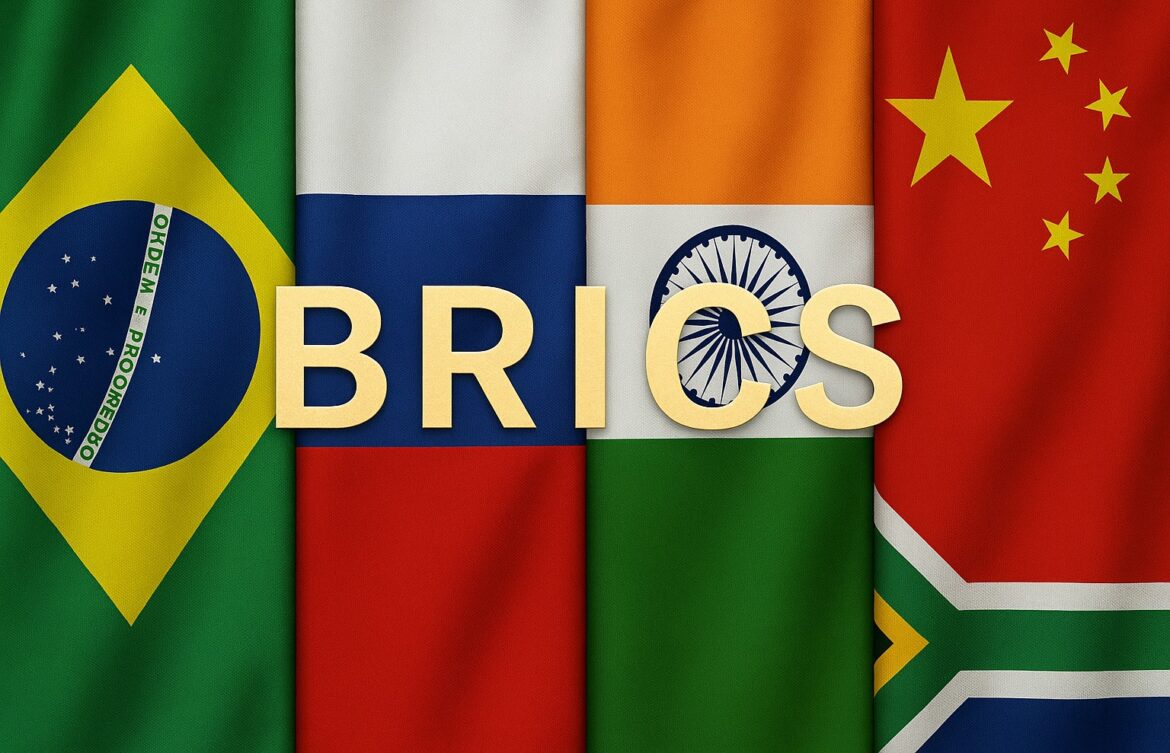At the just concluded BRICS summit in Kazan, Russia, a symbolic BRICS currency note was unveiled and it sparked discussions about the changing face of global finance and the implications for the US dollar which had hitherto been the preferred settlement currency for global trade. The BRICS nations also formerly endorsed the payment for cross-border transactions in local currencies which underpinned their resolve towards reducing dependency on the US dollar.
BRICS which is an acronym for Brazil, Russia, India, China, and South Africa is an intergovernmental organization comprising the countries the acronym was derived from and recently admitted countries like Iran, Egypt, Ethiopia, and the United Arab Emirates. They are a group of the world’s leading emerging market countries coming together to seek areas of economic cooperation and other areas of mutual benefit. The BRICS mechanism aims to promote peace, security, development, and cooperation among member and partner countries.
While the group’s stated objective is to foster economic cooperation and development amongst the member countries, there seems to be an underlying motive to wrestle the control of global economic power from the Western countries led by the USA while also asserting a certain level of economic independence for themselves.
This appears to be the thinking behind introducing the BRICS currency for the settlement of international trade and with the BRICS countries controlling 25% of the global economy and 42% of the world’s population, they certainly have a good launching pad for the proposed introduction of the BRICS currency for the settlement of international trade amongst member countries which will also accommodate other countries willing to use the currency for their trade transactions.
The proposed BRICS currency, aimed at reducing dependence on the US dollar, has sparked intense debate among economists, policymakers, and industry leaders. As the BRICS nations forge ahead with their plans, the potential impact on global trade and the US dollar’s dominance warrants closer examination.
The BRICS currency, envisioned as a supranational currency, seeks to facilitate intra-BRICS trade settlements among member countries and gradually expand to accommodate the settlement of other countries’ international transactions. This move is driven by a desire to diversify away from the US dollar and the need to enhance economic integration among BRICS nations while also reducing transaction costs and fostering increased financial stability.
The BRICS currency would also significantly impact global trade as it will boost trade amongst BRICS countries by simplifying transactions between them and reducing exchange rate risks, leading to increased trade volume amongst the member nations. It will also help to diversify global trade as non-BRICS countries will be encouraged to adopt the use of the BRICS currency for trade settlement while reducing the dependence on the US dollar. This will also enhance the influence of emerging market countries in international trade, strengthen the position of BRICS nations in international trade, and potentially shift economic power dynamics.
The rise of the BRICS currency would certainly have consequences for the US dollar as the BRICS currency would erode the use of the US dollar in the settlement of international trade transactions and potentially weaken its status as the world’s preferred reserve currency. This will also lead to a decline in the US influence while diminishing the US’s ability to impose economic sanctions and dictate global economic policies. It would also affect the implementation of the US monetary policy as a reduced role for the US dollar could limit the Federal Reserve’s ability to implement monetary policy globally.
There would certainly be a lot of challenges in introducing the BRICS currency because they would be sailing in uncharted waters. However, coordination and good corporate governance must be adhered to and to ensure this, they must put in place robust institutional frameworks and consensus among the BRICS nations. There is also a risk of currency fluctuation resulting from exchange rate volatility which could undermine confidence in the use of the BRICS currency while there is no guarantee that there would be widespread adoption of the currency by non-BRICS countries.
While the BRICS currency’s implementation timeline is uncertain, they will first need to establish the BRICS Central/Reserve Bank and develop a unified payment system before a gradual introduction of the BRICS currency for intra-BRICS trade.
The BRICS currency has the potential to reshape global trade dynamics and challenge the US dollar’s dominance. As the BRICS nations navigate the complexities of implementing a supranational currency, the world watches with keen interest. The outcome will have far-reaching implications for international trade, economic stability, and the global financial landscape.
Oshobi, a development economist, management consultant, and author writes from Lagos, Nigeria.

